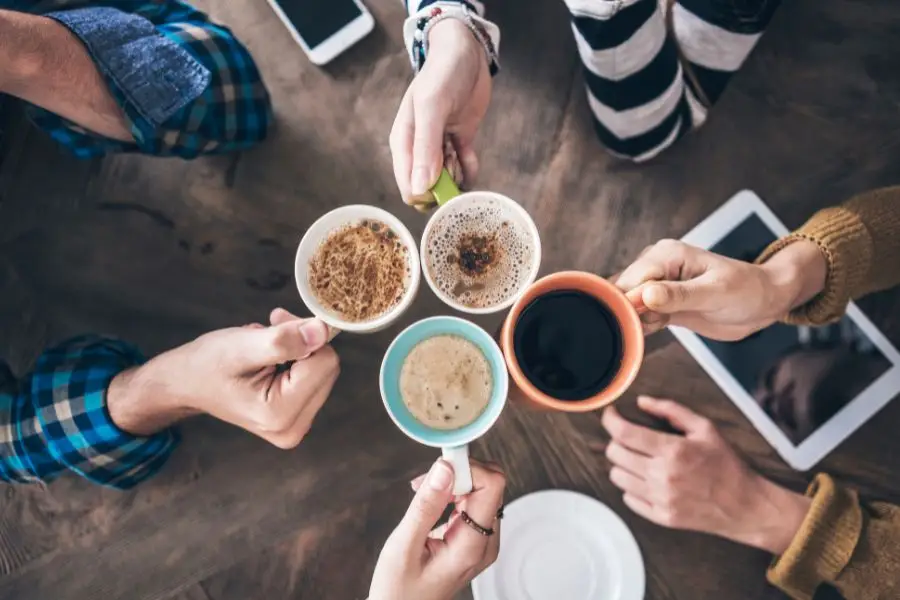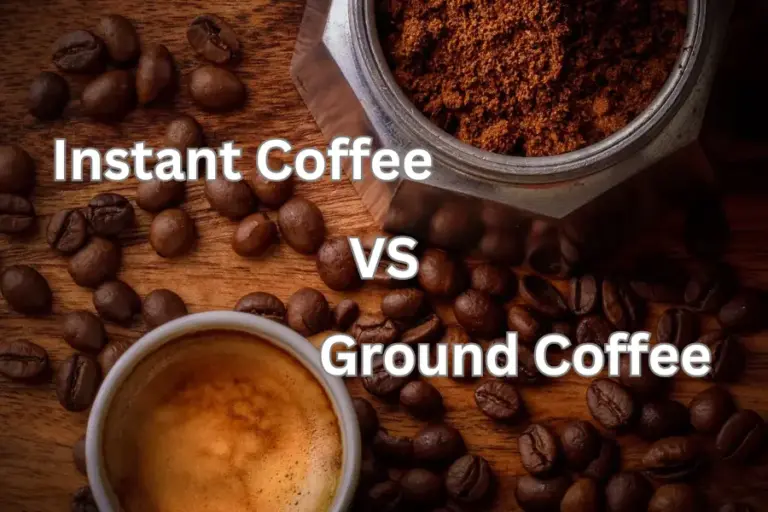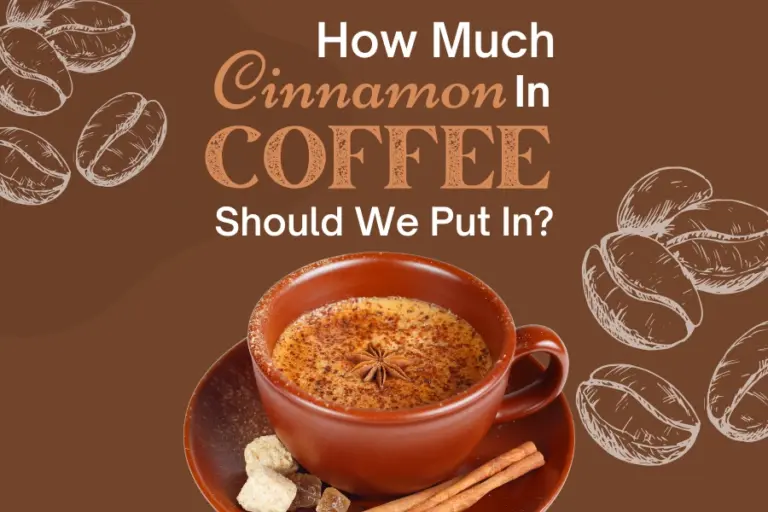How Many Ounces In A Cup Of Coffee? The Perfect Brew Ratio

Coffee is a worldwide beverage that has integrated into people’s lives as well as a cultural aspect in some countries. For any coffee lover, this drink is an integral part of their daily life, commonly associated with breakfast. Therefore, it’s not uncommon that people often grab a brewed coffee cup and have a little chit chat to kick start a new day.
The variations of coffee throughout the years are diverse, and each country develops different coffee flavors and styles based on various factors. For some, coffee is a health-conscious choice, while for others, it’s a way to stay awake and focused during the day. And for any coffee enthusiast, if you don’t know how many ounces in a cup of coffee for your specific needs, let’s take some time to discover some interesting insights on coffee measurements and what creates a perfect cup.
How Many Ounces Are In A Cup Of Coffee?
When it comes to coffee, brewing size and ratio play a big role in creating the perfect taste. Read on to discover how many ounces are in a standard cup of coffee and how major brands measure their signature drinks.
How Many Ounces Are In A Standard Coffee Cup Size?
In the American market, the usual coffee cup volume is about 8 ounces, which is approximately 240 milliliters (1 fluid ounce of water equals about 29.57 milliliters). Based on Statista’s figures in 2020, more than half of the consumers in the US reported favoring the medium size cups that range from 12 to 16 ounces of fluid ounces (approximately 355 to 474 milliliters)1. It is clear that large coffee servings are becoming prevalent in the U.S. market.
Nevertheless, there is not such universal standardization in typical coffee size. The coffee cup volume can vary significantly across different regions and coffee shops due to some factors, including cultural preferences, brewing methods, and consumer demands. Some tasters might prefer a smaller cup to enjoy the strong flavor of coffee, as opposed to milder brew in a larger cup. To illustrate it, here is a list of example showcasing coffee oz interests across various nations:
- In Turkey, a traditional coffee cup holds about 75ml (around 2.5 fluid ounces). This is because Turkish people prefer the robust flavor, which is often brewed unfiltered and served with grounds at the bottom of the cup.
- Canada, New Zealand or Australia share the same interests. Specifically, an average coffee ounces is around 250 ml (about 8.5 fluid ounces), catering those prefer specific coffee styles, from lattes to flat whites.
- Japanese coffee culture often favors typical cup servings of 6.7 ounces (approximately 200 ml). Their coffee culture always emphasizes the use of high-quality coffee beans and precise brewing techniques, showing their artistry and meticulous hands in serving the perfect cup.

A standard hot coffee such as espresso, chocolate coffee and more, occupy 6 ounces (roughly 180 milliliters) in the cup. This allows extra space for toppings such as cream, sugar, chocolate, marshmallows, or foam, making coffee more enjoyable without spilling it over.
How Many Oz Are In Each Coffee Chain Beverage Size?
Every coffee brand possesses its recipe for how best to prepare and serve coffee. Below are some of the most known coffee chains to give you a clue in understanding how many ounces in a cup of coffee you are likely to get from each of the chains.
Starbucks is a global brand with hundreds of franchises worldwide, offering a variety of cup sizes as follows:
- Short (8 oz): An ideal option for espresso shots or a quick coffee fix.
- Tall (12 oz): A popular choice for those who want a moderate-sized drink.
- Grande (16 oz): A Perfect fit for lattes and cold brews, giving a satisfying amount of coffee.
- Venti (20 oz hot, 24 oz cold): A great kit for those who need a larger caffeine boost or enjoy iced drinks.
Compared to Starbucks, Dunkin’ provides more straightforward size systems as follows:
- Small (10 oz): A good choice for a quick morning pick-me-up.
- Medium (14 oz): Balances convenience and quantity for most coffee lovers.
- Large (20 oz): Ideal for indulging in large servings of their popular iced coffees.
McDonald’s offers sizes, ranging from Small (12 oz), Medium (16 oz), and Large (20 oz), appealing to casual drinkers seeking value and convenience.
Ounces In Popular Coffee Drink Type
In addition to the varying serving sizes at coffee shops, each type of coffee requires separate brewing methods. Therefore, the oz volume can differ among various coffee types. Here’s a quick example:
- Espresso tastes as a concentrated flavor, typically served in 1-2 ounces.
- Americano: Made by adding hot water to espresso, usually around 8-12 ounces.
- Latte: A creamy blend of espresso and steamed milk, commonly served in 12-16 ounces.
- Cappuccino: Equal parts espresso, steamed milk, and foam, often served in 5-6 ounces.
- Iced Coffee: Usually around 16-20 ounces, perfect for a refreshing caffeine fix.
What Is The Golden Ratio In Coffee Brewing?
If you still don’t know how many ounces in a cup of coffee brewed is perfect for you, then, there is the best proportion of coffee to water known as the golden ratio. This recommended ratio for brewing coffee is about 1:15 to 1:18. If you use the golden ratio, you can calculate the grams of ground coffee as follows:
- If you use 236.6 milliliters of water, you’ll need:
236.6ml/15 ~ 15.77 grams (tương ứng với tỷ lệ 1:15)
- If you use the 1:18 ratio, you’ll have:
236.6ml/18 ~ 13.44 grams (tương ứng với tỷ lệ 1:18)
The golden ratio usually comprises 1.5 tablespoons of coffee grounds, but it can be adjusted to create your specific flavor. According to the FDA, moderate caffeine can fit well with health-conscious individuals. For most adults, up to 400 milligrams of coffee grounds on a regular basis, roughly 12-ounce cups of coffee, is considered safe2. However, this standard should not apply to all people, especially for those who are more sensitive to caffeine.
Whole-bean Coffee and Ground Coffee: Which one is Easier to measure?

To calculate how many ounces in a cup of coffee with ease, ground coffee is more convenient. It eliminates the step of grinding whole-bean coffee, allowing you to quickly measure with tablespoons or scoops. In contrast, you need to add an extra step to grind the whole-bean coffee before brewing it.
Moreover, whole-bean coffee can be challenging to measure due to the gaps between the beans, making it difficult to determine the exact amount of coffee you consume daily. However, if you desire a fresher taste that only whole-bean coffee can provide, it’s worth the time. It doesn’t matter whether you choose whole-bean or ground coffee for your brew. If convenience is your priority, ground coffee is the easier option, while whole beans can offer a vibrant taste for your preference.
Final thoughts
For all the coffee lovers, it might be confusing how many ounces in a cup of coffee is best for your taste at first. After reading this article, you would have a good grasp of some specific fluid ounces in a coffee cup and the golden ratio recipe for brewing. Combined with your personal taste preferences, I believe you can create your unique and delicious cup of coffee on your own.
- M. Ridder and 13, J. (2022) Coffee drinking U.S. consumers by Cup size 2020, Statista. Available at: https://www.statista.com/statistics/323437/coffee-drinking-us-consumers-by-cup-size/. ↩︎
- FDA (2024) Spilling the beans: How much caffeine is too much?, U.S. Food and Drug Administration. Available at: https://www.fda.gov/consumers/consumer-updates/spilling-beans-how-much-caffeine-too-much ↩︎




